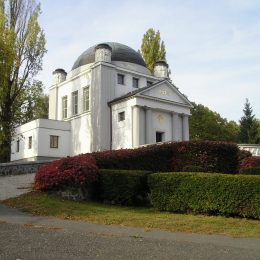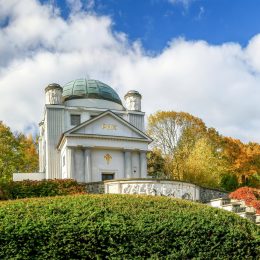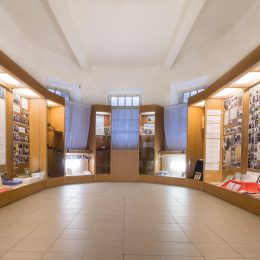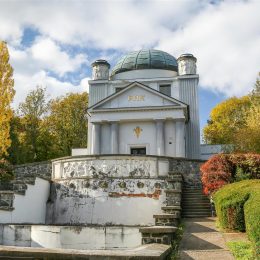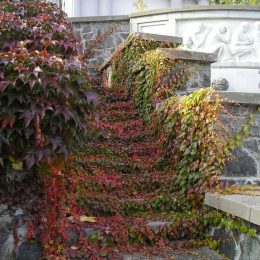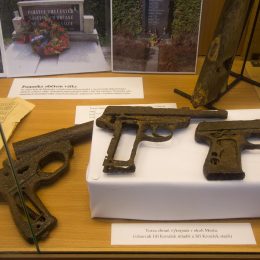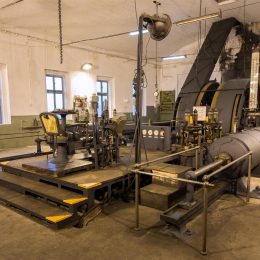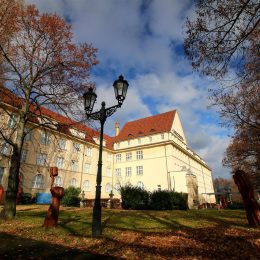An ancient temple? No, a former crematory, now a memorial.
History
In 1923-24, a crematorium was built on a gentle slope of the Čepirohy heights in the open countryside. It was built by architect Anton Switil from Most according to the plans from Viennese architect August Kirstein. The centre of the building consists of a square ceremonial hall with a horseshoe apse (a niche for the altar) and adjacent side rooms. The hall is roofed by a huge dome. There is a significant front entrance, consisting of four fluted columns supporting a tympanum with the Latin inscription “PAX” (peace). That is evoking the idea of the ancient temple. The corners of the building are decorated with a relief decoration. The funeral procession of naked figures connected in one chain is the symbol of equality and unity in death.
Because the building is constructed on a slope, there is an access ramp leading to it. The ramp’s walls are again decorated by a relief depicting a scene – female and male figures who are turning to a sitting hermaphrodite (a symbol of perfection). The particularity of this local funeral hall is that the coffin did not disappear backwards but downwards.
The crematorium’s operation started in February 1924. Since that time, the crematorium was located quite far from the town centre where there was a city electric railway line leading to it. Since 1930, there has been a stop for the bus line connecting Most-Havraň.
In 1987, the crematorium was put on a list of cultural monuments. In 1995, the Ministry of Culture approved the project’s reconstruction into an international memorial for the victims of WW2. The memorial is built within the concept of the Geneva Conventions for the respectful honouring of the victims from 14 European countries. In this building, mostly the captives from labour and concentration camps were cremated.
Present days
Within the memorial is located an exhibition documenting the events of the war between the years of 1938 to 1945 in Most. It recalls thousands of war victims and the people who passed through the local labour and concentration camps.
- Památník obětem 2. sv. války
- Památník obětem 2. sv. války
- Památník obětem 2. sv. války- vnitřní prostory
- Památník obětem 2. sv. války
- Památník obětem 2. sv. války
- Památník obětem 2. sv. války – expozice

